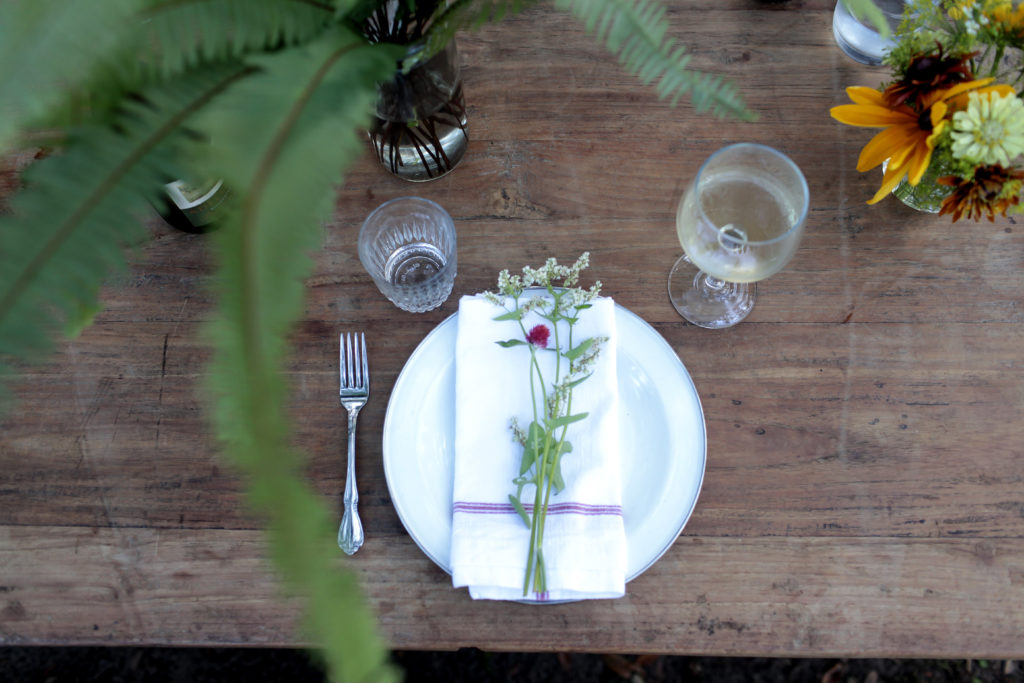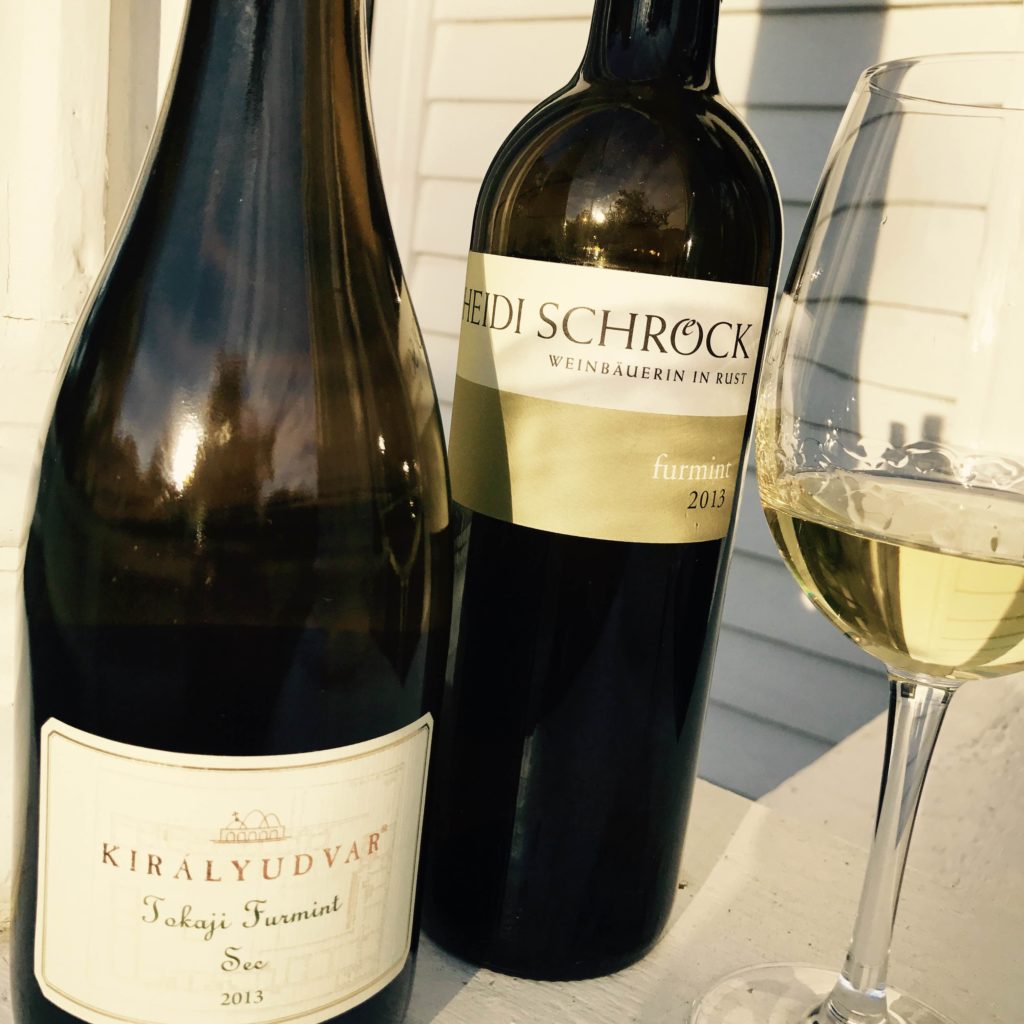
When the Question Really Is: What Wine Would You Want if You Were Actually on a Deserted Island?
On more than one occasion, I have heard both guests and staff remark that “change comes slowly to Greyfield.” Over the past year, I’ve come to observe that this is largely true. There are, of course, the cyclical, seasonal variances to rely upon: the early sunsets in winter; knobby-kneed foals in the spring. But as guests step off the Lucy R. Ferguson and walk the short path to the inn, they marvel at the same live oaks that generations before walked by every day. When they step inside, they’re surrounded by fixtures, furnishings, books, and paintings original to the home, collected and cared for by the family. At breakfast or dinner, guests are seated at the same dining room table where the Carnegie family took their meals. When the fires are lit, it is easy to imagine the same fires warming those gathered around them at the turn of the century. There isn’t even a landline at the inn; communications with our mainland office are carried out through VHF radio, and notes scurried back and forth on the boat. There is no Internet. Sometimes, the most exciting part of a day is watching the familial drama of a herd of wild horses play out in the backyard. Little horse operas full of mare-stealing and hoof-stomping.
So yes, change comes slowly here. Unless we’re talking about the inn’s wine list, that is. Over the past year, the wine offering has expanded from sixteen, mostly New World selections, to a list of largely European producers that hovers right around ninety wines. A year may sound like a while, but when you’re selecting wines for a property that is seemingly frozen in amber, it feels like light-speed. And the family wasn’t too interested in slowly peeling off the band-aid, either. I was instructed to “overhaul the whole darn thing.” That was the spring of 2015, when I would dip in and out as a free-lance consultant.
Eventually, it was clear the beverage program needed a full-time hand, and that really set the ball rolling.

Just Because You Build It, Does That Mean They’ll Drink It?
There were two things that I wanted Greyfield’s wine program to accomplish: the first was to offer bottles that complemented Chef Whitney Otawka’s southern-inspired, coastal plates. She and I worked together in various iterations in previous years, and I felt I understood her food, and delicate touch in the kitchen enough to quickly populate the list with a handful of trusted producers I was familiar with, nearly all of whom produce wines with a non-interventionist approach, good fruit, and essential acidity.
The second goal was to provide guests with plenty of opportunities to explore the breadth of wines without necessarily committing to a bottle. I didn’t want the kind of list that allowed for sleeper bottles to languish in storage until someone came along to take a chance on them. I just wanted to pop them open to share with folks. That’s when we decided to offer per-course wine pairings at dinner on Fridays and Saturdays.
The response on the part of our guests took me by surprise. There was a marked up-tick in dining room chatter about the wines after the nightly dinner announcements, and what seemed like relief at not having to fuss too long over which wine to choose. It also fostered spirited conversations between our staff, our guests, and myself. Wine offers a lot of opportunities to learn about all sorts of things: agriculture, geography, geology, world history, language. It’s a conversation-starter.

That said, I’m a big believer in showing someone something, rather than just lecturing them about it. Pairing nights proved to be the perfect setting for this. After a few months, we decided to expand pairing nights to Thursdays, and then Sundays. Now our diners are able to break free of the chard/cab bubble more often, if they choose, and experience for themselves how these wines stand up.
A lot of thought, conversation and, of course tasting, goes into choosing which bottles get pulled for any given night’s three-course dinner. There are pestering questions from myself to the chefs as they’re prepping. How acidic is the sauce? What are you doing to those parsnips? What kind of squash is in the soup? Are the nuts toasted, or raw? Then comes a steady stream of glasses to the kitchen for the chefs, and quick bites of a dish’s various components.
Greyfield’s is a seasonal kitchen. As the weeks progress, so do its meals, reflecting what is coming from Greyfield Garden, the surrounding waters, or local purveyors. Fall and winter are some of my favorite times to pull open more opulent white wines, like Vouvray or white Rhône blends, as well as delicate but structured red Burgundies, or Barbarescos. There’s an unending supply of root vegetables, squash, and winter lettuces the gardeners bring to the kitchen. Each plate provides various challenges to finding the right partner from the list. Sometimes, it takes a few tries.
Getting Specific
One dish that took some time to find the right wine for has become one of my favorite: oak grilled, wild-caught Georgia shrimp. I’m a Midwesterner, so shrimp isn’t something I naturally gravitate toward. As is often the case, however, Whitney makes it easy to be a late-to-the-party convert. After the shrimp come in from the oak wood-fired grill, they’re arranged over earthy heirloom beans, piperade, and charred onions, surrounded by a smoky tomato broth, often given a touch of heat from dried chiles. I tried a lot of juice for this plate: Sancerre (too dry); Riesling Kabinett (not bad, but often a little heavy handed); Savennieres (clobbered the dish). Then I turned to one of those languishing bottles that I admired, but often went under my own radar: Furmint Sec, or dry Furmint.
You may have tasted this little-discussed white grape if you’ve ever been lucky enough to sample the truly extraordinary Azú sweet wines of Hungary’s Tokaj region. But the late-ripening, thick-skinned grape can also make for alluring, full-bodied, dry wines. Typically, they exhibit considerable ripe orchard and tropical fruit notes, as well as slight nutty aromas. They tend to be higher in alcohol, but retain surprisingly balanced acidity and great aging potential.
The dry Furmint that was on our list, actually an Austrian one made by the talented Heidi Schrock, comes from the province of Burgenland, about five miles over the Hungarian border. I say “was,” because I was so pleasantly surprised by what I was sure would be a long-shot pairing, that the Heidi Schrock became a weekly go-to. And then, it was gone. No more left at the distributor. I wasn’t sure I’d find a suitable stand-in; the wine had all the hallmarks for a synergistic match with the shrimp. Its weighty apricot-laden palate held up to the spice; its acid worked perfectly with the tomato; its tasteful oak presence (something I’d normally avoid with most seafood plates) demonstrably played up the smoky oak flavors imparted on the sweet shrimp. The wine also had a kind of waxy, macadamia nut thing going on, too, which nicely handled the creamy beans with all their earthy flavors. It’s also gorgeous-looking in the glass- all golden-hued and honey-colored. All of this speaks to a wine that truly showcases a sense of place. The grapes come from one of the hottest micro-climates in Austria, in vineyards that form a horseshoe around Lake Neusiedl, which reflects the day’s sun back onto the vines, providing ample ripening. The wine is aged in large, acacia wood casks, giving it a structured backbone.
So, when I got down to my last bottle of the 2013 Heidi, I sadly removed it from the list, and squirrelled it away on the great onesies shelf, a constant reminder of past wine list soldiers. (There are some real finds there. You should ask me about them when you come to visit.)
I fumbled around for a few weeks with various Burgundies, Loire whites, and both dry and off-dry Rieslings. None were awful, but none of them seemed to pick up and run with it, in my opinion. Then I became aware of what is considered to be a hallmark producer in Tokaj, Hungary: Kiràlyudvar (pronounced Kee-RYE-oohd-var), an estate that farms its volcanic soiled vineyards organically. The grapes ripen in a unique climate of rainy autumns and long Indian summers. It’s then aged in large Hungarian oak casks.
Here we had a Furmint that proved to be a little more viscous, slightly more ripe and tropical, less nutty, and no less beguiling. Another 2013, this Furmint sec proves the age-worthiness of the wines; there’s still impressive acidity and lift behind all that fruit. This wine also seems to hone in on the shrimp’s slight smoky heat with a little more precision.
Just this week, the distributor for both these wines found a lone case of the Heidi Schrock Furmint in a New Jersey warehouse. So guess who’s coming back to Cumberland for a longer stay? I’m excited to taste these wines back-to-back. On a list as small as ours, it may look strange to have two similar oddities, but I hope the always-changing, ever-evolving selection at Greyfield helps to shed light on lesser-known producers and varietals. I think a good wine list can be any size, as long as it seeks to bridge gaps and spark intrigue.
So, come visit. Disconnect, and re-connect, as we like to say. Pour yourself some wine, look at some horses, and maybe think how the stuff in your glass connects you to the whole wide world.

Cheers!
Christopher Becerra, Service & Beverage Director

P.S.
You can see our current wine list here.


